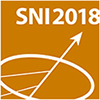The large amount of energy deposited by the neutralization of highly charged ions during their impact on solid surfaces leads to electronic excitations. Depending on the material's response to the ion impact, phenomena like sputtering and the formation of individual nanostructures at the surface can occur. To pinpoint the energy deposition and it's time dependence experimentally we recently...
Cerium hexaboride is a textbook example of an f-electron system hosting an exotic antiferroquadrupolar order. Even after decades of intense studies, it still lacks a complete theoretical description, and experiments continue to present puzzles in the form of unexpected observations. In recent years, we have scrutinized the magnetic excitation spectrum of CeB$_6$ and its doped derivatives such...
Improvements in activity, selectivity and durability of catalytically active electrode materials are of large interest to boost the application of renewable and clean energy conversion and storage systems like polymer electrolyte fuel cells and electrolyzers. Generally, electrochemical reactions like oxygen reduction/evolution reaction or electrochemical CO2 reduction reaction can be seen as...
Mass spectrometry of atoms and molecules desorbed from a solid surface under bombardment with energetic particles provides a versatile method for chemical surface and in-depth analysis. Typical commercial applications involve the use of keV projectile ions and analyze the flux of electrically charged secondary particles (Secondary Ion Mass Spectrometry SIMS). The collisional sputtering process...
Beyond their traditional role as dielectrics, oxides are fascinating quantum materials showing a multitude of behaviours – such as (multi-)ferroic, memristive, nonlinear optical and topological effects – which are promising for potential memory, logic and sensoric functions. Oxide materials may enable the efficient transformation between electronic and chemical states – and as such hold a key...

